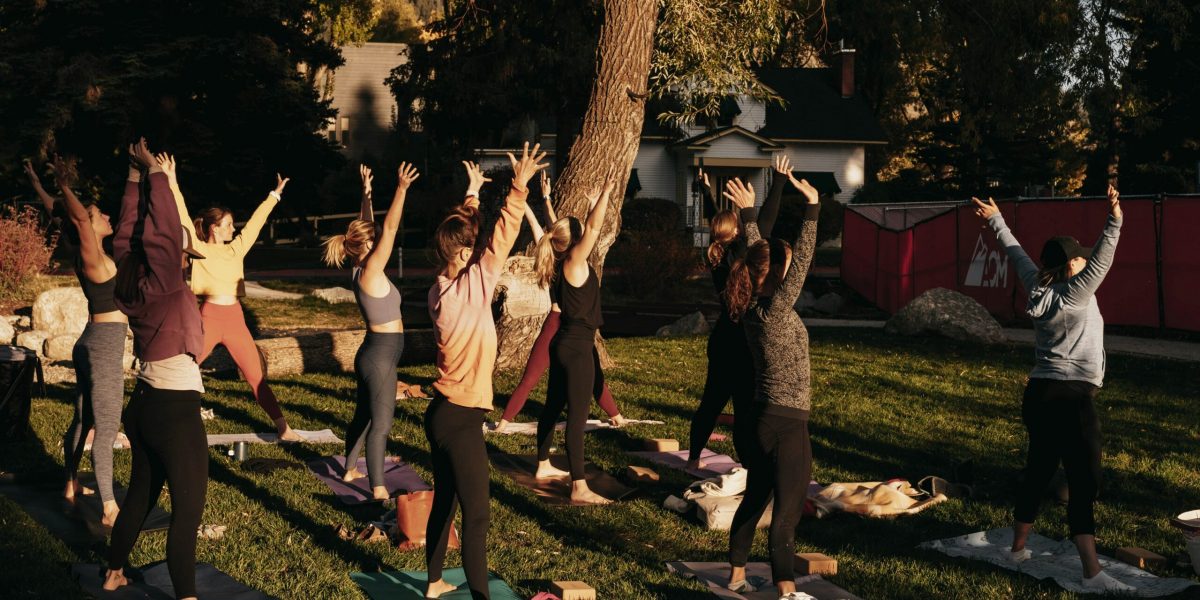Yoga is a practice that connects the body, mind, and spirit through movement, breath, and mindfulness. For individuals new to yoga, it might seem intimidating, but the beauty of yoga lies in its accessibility. With beginner-friendly poses, simple routines, and an emphasis on overall well-being, yoga offers a gentle yet effective path to improved physical and mental health. Whether you’re looking to increase flexibility, reduce stress, or cultivate inner peace, this guide provides the perfect starting point for your yoga journey.
Why Yoga is Ideal for Beginners
One of the most appealing aspects of yoga is its adaptability. Unlike other fitness practices that may require specialized skills or equipment, yoga meets you where you are. For beginners, yoga offers a non-competitive and supportive environment to explore movement and mindfulness. Its holistic approach not only strengthens the body but also calms the mind.
Research has shown that yoga helps reduce stress, improve posture, and enhance flexibility. For individuals experiencing chronic pain or stiffness, yoga provides gentle movements that ease tension while increasing range of motion. Beyond physical benefits, yoga encourages mental clarity by promoting mindfulness, a practice of being present in the moment.
Basic Yoga Poses for Beginners
Starting with simple poses helps build confidence and allows beginners to understand the foundational movements of yoga. Below are some of the most popular beginner-friendly poses:
Mountain Pose (Tadasana): This standing pose is the foundation of many yoga sequences. It focuses on posture and balance, helping beginners develop awareness of their body alignment.
Child’s Pose (Balasana): A restful pose that provides a gentle stretch for the back, hips, and shoulders. It’s perfect for taking breaks during your routine.
Downward Dog (Adho Mukha Svanasana): This pose stretches the hamstrings, calves, and spine while building strength in the arms and shoulders. It’s a staple in many yoga practices.
Cat-Cow Pose (Marjaryasana/Bitilasana): Ideal for warming up the spine, this flowing movement between two poses relieves back tension and promotes flexibility.
Warrior I (Virabhadrasana I): A powerful standing pose that strengthens the legs, hips, and core while improving focus and balance.
These poses are gentle, easy to learn, and provide a strong foundation for exploring more advanced sequences as your confidence grows.
Building a Beginner-Friendly Routine
For those new to yoga, creating a simple, consistent routine is key. Start with short sessions—10 to 15 minutes a day—and gradually increase the duration as your body adapts. Focus on slow, intentional movements rather than trying to perfect every pose immediately. A basic beginner routine might include:
Warm-up movements such as Cat-Cow Pose to loosen the spine and improve circulation.
Standing poses like Mountain Pose and Warrior I to build strength and focus.
Gentle stretches such as Child’s Pose to relax the muscles and encourage mindfulness.
Listening to your body is essential. Yoga is not about achieving perfection but rather about connecting with yourself. Modifications are always available for poses that feel too challenging, and using props like yoga blocks or straps can provide additional support.
The Benefits of Yoga for Physical and Mental Well-Being
Yoga offers a wealth of benefits that extend beyond the mat. Physically, it enhances flexibility, balance, and strength. For beginners who may feel stiff or inactive, yoga’s gentle approach provides an ideal entry point into regular movement. Many practitioners notice improved posture and reduced pain in areas like the lower back and neck after consistent practice.
Mentally, yoga promotes relaxation and reduces stress by engaging the parasympathetic nervous system. Practices like deep breathing and meditation incorporated into yoga routines help lower cortisol levels, leaving individuals feeling calm and centered. For beginners dealing with anxiety or overthinking, even a few minutes of yoga can create noticeable relief.
Long-term, yoga fosters mind-body awareness, teaching individuals to be present and attentive to their needs. This mindfulness extends to everyday life, enhancing decision-making, relationships, and overall happiness.
Tips for Getting Started
Starting a new practice can feel overwhelming, but with the right mindset, yoga becomes an enjoyable and rewarding experience. Here are some tips to ease into your yoga journey:
Find the right space: Choose a quiet, comfortable area where you can practice without distractions. A yoga mat and a few basic props can enhance your experience.
Wear comfortable clothing: Opt for stretchy, breathable fabrics that allow freedom of movement.
Start with guided videos or classes: Beginner yoga videos or online classes provide step-by-step instructions and help you learn proper alignment.
Be patient with yourself: Progress takes time. Celebrate small achievements and avoid comparing your practice to others.
Embracing the Journey
The journey into yoga is as much about the process as it is about the results. Beginners often discover that yoga becomes a transformative experience, offering tools for both physical health and emotional balance. As you explore poses, routines, and breathing exercises, remember that yoga is a personal practice—it evolves with you and adapts to your unique needs.
Whether you’re seeking to improve your physical strength, find peace of mind, or simply try something new, yoga provides a welcoming path for beginners. With consistency, curiosity, and self-compassion, your practice can grow into a lifelong habit that supports your overall well-being.














